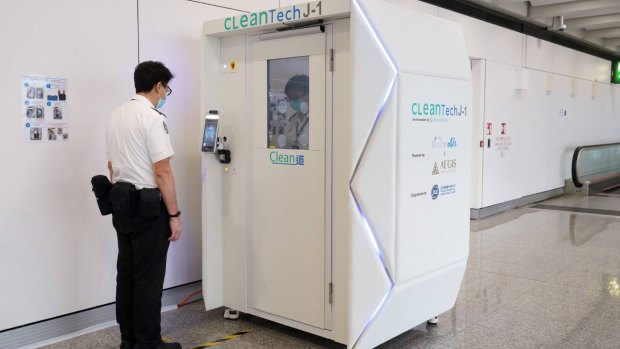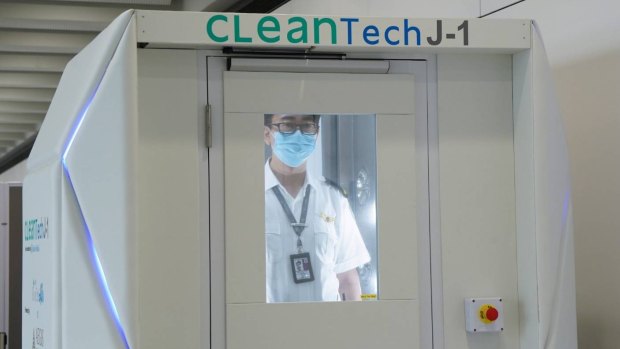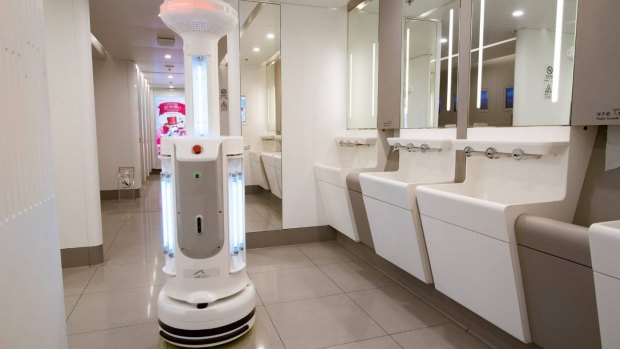This was published 3 years ago
Coronavirus and travel: Hong Kong Airport tests full-body disinfectant booths
By Lorna Thornber

The booth is equipped with an antimicrobial coating and "nano needles".Credit: Airport Authority Hong Kong
Hong Kong International Airport has provided a glimpse of what the future of air travel might look like, introducing cleaning robots, antimicrobial coatings on surfaces and a disinfection booth for passengers.
The busy Asian airport claims it is the first in the world to trial a live operation of CleanTech, designed to disinfect travellers from head to toe.
The process sees travellers have their temperatures checked before stepping into a small booth to be disinfected and sanitised for 40 seconds.

The boots are designed to disinfect passengers within seconds. Credit: Airport Authority HK
The interior of the booth has an antimicrobial coating which can remotely kill viruses and bacteria on human bodies and clothing using photocatalyst technologies and "nano needles", the airport said.
Travellers are also doused with sanitising spray inside the booth "for instant disinfection".
As with some hospital isolation wards, the booth is kept under negative pressure to prevent cross-contamination.

A cleaning robot in an airport bathroom. Credit: Airport Authority Hong Kong
Airport staff are participating in the trial but the aim is to open it up to passengers eventually.
The Airport Authority Hong Kong (AA) is also piloting an invisible antimicrobial coating, spraying it on high-touch surfaces in the terminal such as check-in counters and kiosks, toilets, seats, luggage trolleys and elevator buttons.
Meanwhile, Intelligent Sterilisation Robots have been deployed in public toilets and other busy areas around the terminal.
Equipped with ultraviolet light and air sterilisers, the autonomous robots can kill up to 99.99 per cent of bacteria in the air and on surfaces within their immediate vicinity in 10 minutes, the airport said.
"The safety and wellbeing of airport staff and passengers are always our first priority," AA deputy director, service delivery, said.
"Although air traffic has been impacted by the pandemic, the AA spares no effort in ensuring that the airport is a safe environment for all users. We will continue to look into new measures to enhance our cleaning and disinfection work."
Hong Kong Airport is one of many around the world to step up sanitisation measures in an effort to curb the spread of Covid-19.
In New Zealand, airports aim to adhere to Ministry of Health guidelines.
Christchurch Airport, for example, is operating the terminal with single entry and exit points to separate people coming and going.
It has also "re-shaped the passenger and staff flows to help keep people separate, and offer consistent communication reinforcing the physical distancing message," an airport spokesperson said.
Sign up for the Traveller newsletter
The latest travel news, tips and inspiration delivered to your inbox. Sign up now.